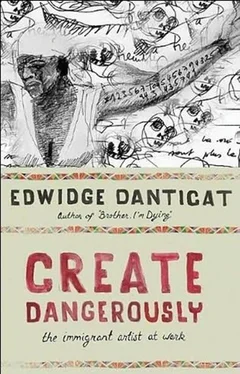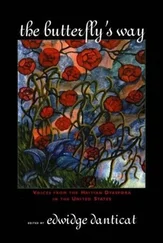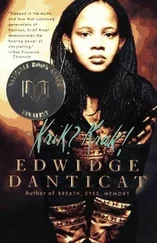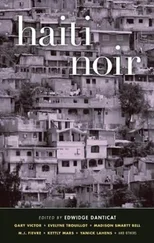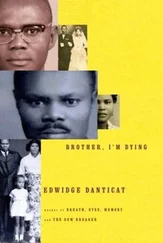The woman’s name was Donna. She was forty-seven years old and very thin. Not at all the kind of person one might expect to be having a heart attack. Her husband explained to the doctor that she had been under some pressure at work and had brushed off three days of chest pains as symptoms of something else. At the doctor’s recommendation, the pilot decided to land.
As we descended toward the snow-capped mountains of Salt Lake City, nearby passengers vacated their seats so Donna could lie down. A few even joined the flight attendants in the quick collection of cups and cans that was crucial to the lastminute landing. Community, like family, is sometimes a result of arbitrary grouping. Having ignored one another the entire flight, my seatmates and I looked at one another and exchanged a few knowing nods and glances for the first time. Because suddenly we were a kind of village in the air and one of our own was in danger.
When the plane landed and the paramedics boarded to pick up Donna, one of them joked, as he made his way down the aisle, that we would not be charged for the extra stop in beautiful Salt Lake. No one laughed. Instead, as Donna was carried off the plane, many of the other passengers squeezed her son’s and husband’s hands and told them that they would pray for her. While we waited to take off again, I could hear snatches of conversations on cell phones and the words, “sorry,” “thank you,” “I love you.”
My favorite flights depart late in the afternoon or early in the evening. While on those flights, I always imagine what the plane must look like to a very small child from the ground, a silvered speck racing across a flaming orange sky, nurturing the child’s own dreams of escape, like they once did Assoto Saint’s and countless others. I am now inside that giant sunset-framed bird and as I approach my destination I am lowered into a picture-postcard view of all the places that are lit in my arrival city, what combat fighters once called a “God’s-eye view” of the luminescent ground.
Now and then on early morning flights I ask for a window seat, if there is one, in the very last row. I take off my shoes and surrender to the vibration of the engines beneath me, which produce a loud but soothing white noise. While staring out the window at the early predawn sky, I sometimes have waking dreams and watch mirages emerge from the dense highlevel clouds. One morning I thought I saw Tante Ilyana-who had never been on an airplane-walking slowly over the clouds toward me. Another time I thought I spotted my childhood friend Marie Maude Gédéon, who had died of renal cancer at age thirty, joyfully doing somersaults in the celestial mist wearing the wedding dress in which she’d been buried because she was unmarried when she died.
My dread of flying returned when I was in what felt to me like a near crash between Miami and New York one summer night. As we were approaching New York’s LaGuardia Airport, the plane began to nose dive as though it were being sucked down by a centrifugal force. I was looking out the window and suddenly the buildings beneath us began to blur. As the plane rattled from side to side, people screamed, some shouting for help, others calling loved ones’ names, and still others shouting directly to God. Finally, the runway appeared and the plane’s wheels seemed to tap the ground once, then twice, then three times, bouncing like a giant basketball. Then the plane shot back up in the air.
Everyone sat stunned into complete silence, as we waited for the captain to explain what had happened.
Finally he spoke.
“Folks, there’s nothing wrong with the aircraft,” he soberly declared. As we were circling the city that it seemed we had nearly crashed into, the captain assured us that we had “only” been caught in a wind shear, an aggressive type of turbulence caused by an abrupt shift in the wind’s direction.
On September 10, 2001, I was on a plane with my mother, returning from a ten-day trip to Japan. My second book, a collection of short stories titled Krik? Krak !, had just been published there, and I had been invited to give a series of talks jointly sponsored by the American and Haitian embassies of Japan. The trip had gone quite well. In addition to work, my mother and I had done a lot of sightseeing, including at the world-famous Peace Memorial Museum in Hiroshima. On the flight back to the United States, however, I had been anxious to get home. Home being my first apartment in New Rochelle, New York, what I called my artist colony of one, in a town that had taught me the true value of writerly solitude, a town where I knew no one. The flight from Tokyo was long but uneventful. My mother read and reread the twenty-third psalm. (The LORD is my shepherd; I shall not want.) Every now and then she stopped and marveled at how much we were fed, even in coach. I made her walk every other hour to avoid blood clots in her leg.
We landed in Chicago and after a brief layover changed planes there. My themed reading for both flights was Wole Soyinka, anything I had not yet read by the Nigerian novelist, memoirist, poet, and playwright. Because New York City was our final destination, I lingered over a poem of his titled “New York, U.S.A,” which had been published more than a decade earlier.
Control was wrested from your pilot’s hands,
And yours, mid-Atlantic, hapless voyager.
Deafened the engine’s last descent
To all but disordered echoes of your feet.
An evening thunderstorm forced us to circle over the city for some time, making us land later in the evening than we should have. I spent a sleepless, jetlagged night at my parents’ house and the next morning around seven a.m. I drove my tiny Toyota Echo to New Rochelle. Traffic was light. A better driver now, I drove assuredly, routinely, over the Whitestone Bridge and into the tree-lined streets of New Rochelle, where people were heading out for work. Then I walked into my sparsely furnished apartment, crawled onto my mattress on the floor, and fell into a deep sleep.
When I woke up a few hours later, I turned on the television hoping to catch my midday soap opera, but my television was not working. There was only television “snow,” a sign that my signal had been lost. Later I would learn that it was because the tower that sent this signal to my home had been destroyed when the first plane hit the World Trade Center at 8:45 a.m. I did not have cable and, knowing nothing of what had happened, I went back to sleep. I woke up at 2:00 p.m. when my phone rang. My father had been trying to reach me, but phones were also down.
“The World Trade Center has been attacked,” he said. “The towers don’t exist anymore. Thousands of people have died.”
I wanted to rush home, to my parents’ house, but the White-stone Bridge was closed and no trains were running. I would have to process this horrifying news for long empty hours by myself, with no one I loved within physical reach. I was alone and my writer seeking solitude was of no use. A friend’s wife, who had escaped from the second tower, had temporarily gone mute from shock. My pregnant cousin had walked home to Brooklyn from midtown Manhattan, barefoot. My brother Karl, who worked near Grand Central Station, was still unaccounted for. Still, I didn’t think I knew anyone who’d died in the towers, or in Pennsylvania, or in Washington? Or did I?
The next day, when I was finally able to leave New Rochelle, I took the train to Manhattan, a darker, quieter city, with MISSING flyers on subway walls and makeshift memorials on street corners. My friends and family now accounted for, I still couldn’t help but feel that someday I may not be so lucky, that I may be among those wandering the streets, asking myself, the way I would nearly a decade later, during another catastrophic event in Haiti, how others could be eating and sleeping, and not be looking for a father or a mother, a son or a daughter, a husband or wife. I also felt guilty for having slept through what for so many people and their loved ones had indeed been the end of the world. That so many others would never again wake up haunted me. I felt useless and at a loss for words.
Читать дальше
